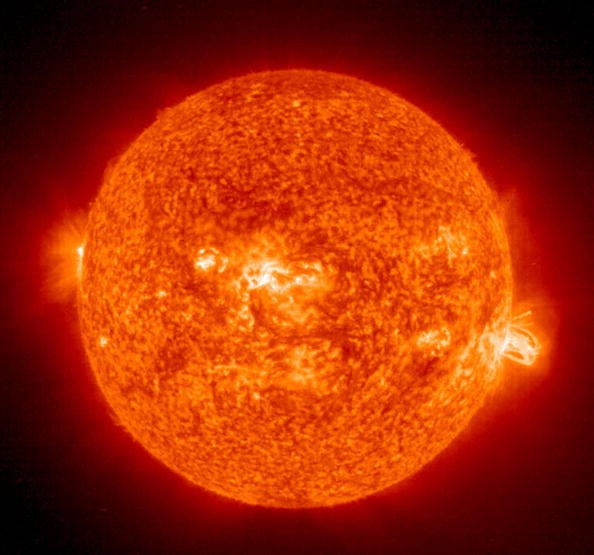Another solar flare from the Sun is expected to hit Earth this weekend, according to scientists. Experts warn that the Coronal Mass Injection has the potential to damage Earth's electricity grid.

Recent Eruption

On Wednesday, a thread of magnetism erupted out of the Sun's southern hemisphere, forming a 50,000-mile-long canyon with towering walls of red-hot plasma.
The core of a coronal mass ejection (CME), a considerable outflow of plasma and magnetic field from the Sun's corona, was captured in a breathtaking photograph by NASA's STEREO-A satellite and the Solar and Heliospheric Observatory (SOHO). Experts now believe that the CME recorded by NASA and SOHO on November 28 will send a "glancing blow" to the Earth's magnetic field.
CMEs can reach the globe at rates ranging from 250 km per second to 3,000 km per second, according to the US Space Weather Prediction Center (SWPC).
Geomagnetic storms can also be pushed into direct contact with Earth by CMEs.
Space Weather
SpaceWeather.com astronomers explained: "A geomagnetic storm is a severe disturbance of Earth's magnetosphere that happens when energy from the solar wind is transferred extremely efficiently into the space environment around the planet.
"Variations in the solar wind cause large changes in the currents, plasmas, and fields in Earth's magnetosphere, resulting in these storms.
This isn't the first time the space agency has captured the Sun's erratic behavior.
NASA's Solar Dynamics Observatory (SDO) captured photographs of a big "coronal hole" in the Sun's outer atmosphere earlier this month, revealing "gaseous material" fleeing the hole.
There were worries at the time that solar winds, which are plasma streams that flow from the Sun's corona into space, may impact the Earth.
This time, though, there are worries that a CME will send a geomagnetic storm our way.
If geomagnetic storms clash with the Earth's atmosphere, the result can be chaos on the ground.
Even the smallest storm, ranked from G1 Minor to G5 Extreme, may create havoc if it comes into touch with a satellite.
The nature of space weather has remained mostly unchanged. However, society has progressed, and it is now more necessary than ever to comprehend and anticipate space weather.
Space Weather Forecast

Space weather isn't something that most of us think about regularly. The charged particles and magnetic field of the Sun, on the other hand, are continually moving across space, interacting with the Earth's magnetic field. The auroras occasionally fill the sky with light dancing along these field lines, filling the sky light dancing along these field lines. The most intense space weather occurs when the Sun fires billions of tons of energized particles at speeds of up to 3,000 kilometers per second directly towards the Earth.
Coronal mass ejections (CMEs) are explosions that originate in the Sun's outer atmosphere, the corona, and can create severe geomagnetic storms and harm astronauts, satellites, and spacecraft.
For more cosmic news, don't forget to follow Nature World News!
© 2025 NatureWorldNews.com All rights reserved. Do not reproduce without permission.





